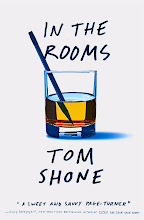From my article about advertising on the MTA for Craig Raine's Arete magazine:—
'Up above, the surface dwellers are sipping designer vodka by the pool, looking out over a sea of razor-flat abs. Down below, the most fervently expressed wish is for a face that does not look like a pizza. If the advertising above-ground is the city’s super-ego writ large, the advertising you find on the New York city subway is something like its subconscious: knotted with frets and fevers, the thousand natural shocks that flesh is heir to. Do you have alcoholism? Too many chins? Bed bugs? Do you need a personal injury lawyer? Night school? A chemical peel? Not that advertising on the subway is without aspiration, necessarily. As on the London Underground — or, for that matter, the dystopian futures shown in the films Blade Runner (1982) and Brazil (1985) — it boasts its fair share of ads for beach getaways and booze, there being nothing quite like being trapped in a 42-tonne steel coffin with 188 of your fellow New Yorkers to sharpen one’s taste for escape. “The other 9 to 5”, runs one vodka advert, offering a grimly comic choice of rat races: round-the clock work or round-the-clock obliteration. You choose.
This is exactly why I love the subway, the natural mode of transport for daydreamers, poets, escapologists, fugitives from justice and fantasists of all stripes. On the street, you walk through the city protected by a force field of potential litigation, and driving by car or taxi is much like high-speed luging. I spent my first few years in the city nervously fondling the taxi ID numbers written in braille on the back of the driver’s seat, wondering what impression it would leave on my forehead in the event of a crash and whether it would count as written evidence. The subway pushes you into close and unfamiliar proximity with the human beings you actually happen to share the city with, and the very unpleasantness of the experience offers an on-the-spot lesson in tolerance. “A Million New Yorkers Are Good Without God,” states an advert paid for by a private donor last year. “Are You?” Actually, no, I’m not: not with my fellow man’s armpit just a few inches from my left nostril. If this is all there is to life, I’m getting off at the next stop.
The MTA is the last place you’d want to advertise atheism. On the contrary, the urge towards transcendence is acute, as evidenced by the strain of metaphysical yearning to some of the ads. One of my favorites is for something called the School of Practical Philosophy, which offers a 10-session, $90 introductory trot through such time-tested truisms as “Become aware of where you are right now,” and “Feel your feet on the ground” and “Watch the breath as it enters and leaves the body. Now be aware of hearing… Taste. Smell.” None of this is advisable on the subway, you understand, and likely to lead to an immediate loss of consciousness, but the ads made a bold pitch nonetheless: “THIS POSTER CAN MAKE YOU HAPPIER THAN ANY OTHER ON THE SUBWAY”. That’s how the poster read when I first arrived in the city, anyway. A year or two later, I looked up and found that the more achievable promise of “SUSTAINABLE HAPPINESS” had been put in its place. If only Thomas Jefferson had followed a similar amendment when drafting the declaration of independence, I thought, and America might have turned out to be a very different kind of place.























No comments:
Post a Comment